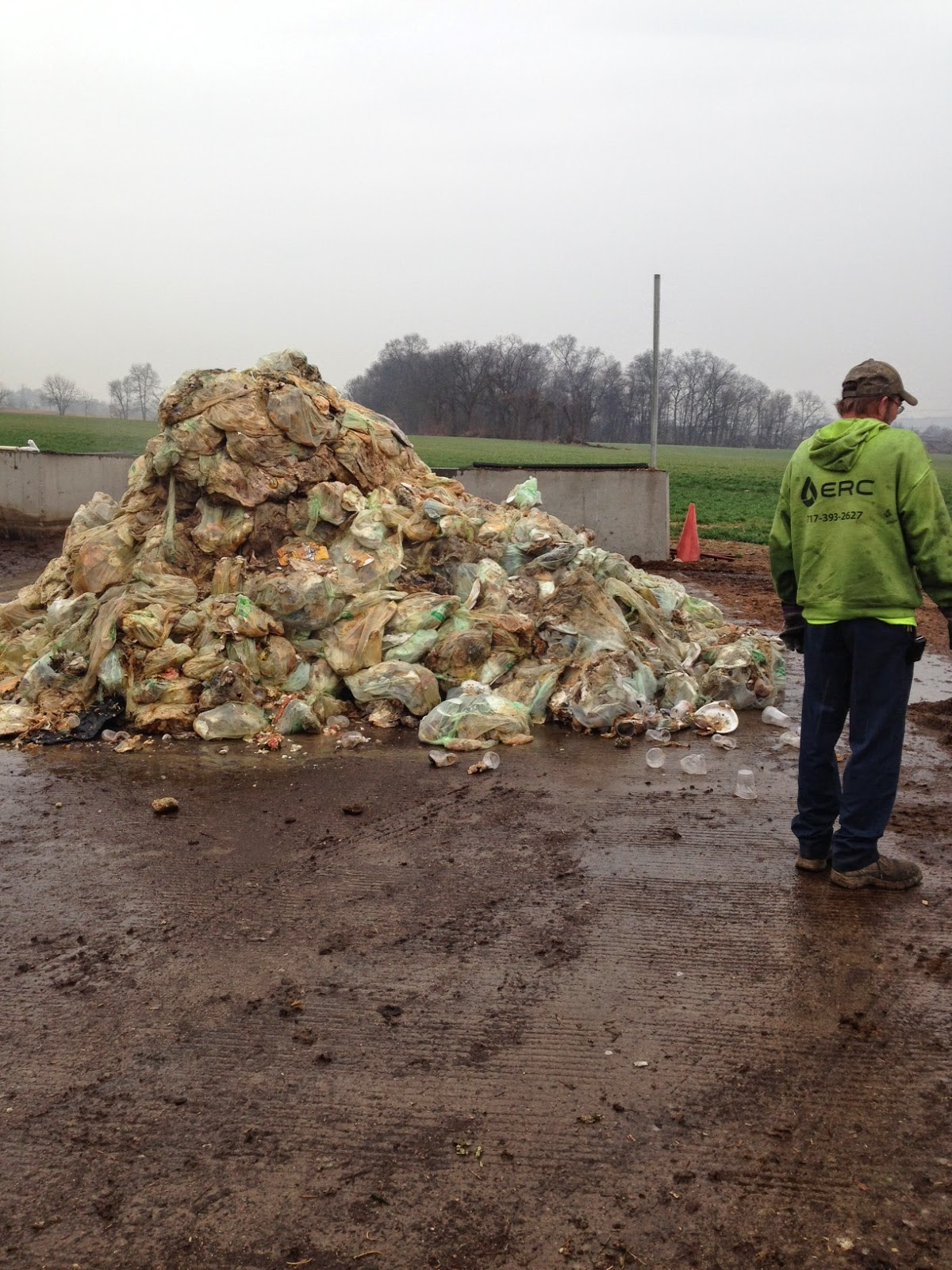Spencer Johnson, Contributing Writer ||

Five miles from Franklin & Marshall’s campus, down a dirt road marked by a dairy sign, lies the Terra-Gro composting facility. A partnership with Oregon Dairy, the facility has been in operation for about a decade and has a second location in Peach Bottom, Penn., near the Conowingo Reservoir.
F&M’s food waste and compostable dinner-ware is combined with the food waste of other companies and businesses in Lancaster County to create the compost Terra-Gro churns on a daily basis. Food waste is critical in rounding out the compost and providing nitrogen to balance the carbon found in cow/horse manure and sawdust. Too much manure draws the nitrogen out with excess carbon and leads to bad
compost.
Before selling compost, Terra-Gro provided animal bedding for farms because selling compost alone isn’t too profitable. Fortunately, Terra-Gro’s connection to trucking and the Oregon Dairy farm makes the venture worth investing in. Many turf companies buy compost at a wholesale price to use over their turf due to its ability to retain water. Many don’t know this, myself included until recently, but compost is efficient at reducing stormwater runoff, the leading cause of nitrogen pollution in U.S. waterways. This is a particularly important problem in Lancaster County due to large-scale industrial agriculture.
Compost is largely un-researched, which means many farmers are hesitant to implement composting into their business practices, said our guide Loren Martin.
“It’s hard to calculate the cost/benefit analysis of selling the compost and buying it back,” Martin said. “Since consultants such as Team Ag and Red Barn Association, with no science background, are likely making these decisions for the farmers, they usually advise against it.”
If more farmers composted and used that compost to re-fertilize their farms, the problem of stormwater runoff that drains to the Chesapeake Bay would be greatly reduced. In order to see these changes, we need to bring the scientists and consultants together and make sure they realize the environmental and economic importance of composting.
It takes approximately three months for a composting operation to be complete. Terra-Gro’s process involves three roofed facilities (to prevent leachates and runoff) and a staggered process strategy. The food waste is immediately mixed with sawdust and manure upon arrival to avoid excess liquid, which is collected by a sloped concrete drain and pumped back into the pile.
Conversely, if the compost becomes too dry, liquid manure from the dairy farm is pumped into the mixture to moisten it. In order to remove bad pathogens like salmonella and E. coli in addition to increasing decomposition speed, the pile needs to stay between 130 and 150º Fahrenheit. Before the compost is complete it is screened by a giant machine with little porcupine-looking sifters in order to get undesirable materials (glass, plastic, etc) out of the mixture. The removal of individual condiment packets has been instrumental in reducing sources of contamination from F&M’s food waste.
Most interesting on our tour wasn’t the compost or the anaerobic digestor that powers the whole dairy farm and heats Terra-Gro’s office — it was the Windrow machine, the machine responsible for churning the compost. It was designed by one of Terra-Gro’s workers, Merle Ranck, a man with no professional engineering background and has twice the fuel efficiency as their old windrow machine. The patent is currently pending.
F&M’s implementation of composting is one thing among many that the school hopes to accomplish with its Sustainability Master Plan.
Other environmental initiatives such as 350.org‘s national Fossil Free campaign to remove the institution’s endowment from fossil fuels or Divestment” are also occurring on campus. F&M’s environmental stewardship should serve as a lesson for the community to support similar environmentally-friendly initiatives.
Spencer Johnson, a senior English and Environmental Studies major, is a contributing writer. Email him at sjohnso1@fandm.edu.